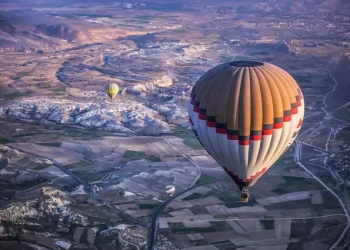Introduction
Exploring natural wonders is an awe-inspiring experience that allows us to connect with the Earth’s beauty and grandeur. From towering mountains to vibrant coral reefs, the world is filled with breathtaking attractions waiting to be discovered. In this article, we’ll take a closer look at seven natural wonders that should be on everyone’s bucket list, offering insights into their formation, significance, and the unforgettable experiences they offer.
1. Grand Canyon, USA
The Grand Canyon is a geological marvel that stretches for over 270 miles through the heart of Arizona. Carved by the Colorado River over millions of years, this vast canyon offers stunning vistas of layered rock formations and dramatic cliffs. Visitors can explore the Grand Canyon by hiking its trails, rafting down the river, or taking a scenic helicopter tour, immersing themselves in its breathtaking beauty and natural splendor.
2. Great Barrier Reef, Australia
The Great Barrier Reef is the world’s largest coral reef system, stretching over 2,300 kilometers along the coast of Queensland, Australia. Home to a dazzling array of marine life, including colorful coral reefs, tropical fish, and sea turtles, it is a paradise for snorkelers and divers. Explore the underwater world of the Great Barrier Reef, marveling at its vibrant corals and teeming marine ecosystems, or take a glass-bottom boat tour for a glimpse into its mesmerizing beauty.
3. Northern Lights, Arctic Circle
The Northern Lights, also known as the Aurora Borealis, are a natural phenomenon characterized by colorful displays of light in the Earth’s polar regions. Caused by the interaction of solar particles with the Earth’s magnetic field, these ethereal lights dance across the night sky in shades of green, blue, and purple. Witnessing the Northern Lights is a once-in-a-lifetime experience, best enjoyed from remote locations in the Arctic Circle during the winter months.
4. Victoria Falls, Zambia/Zimbabwe
Victoria Falls, located on the border between Zambia and Zimbabwe, is the largest waterfall in the world by total area. Known locally as “Mosi-oa-Tunya,” or “The Smoke that Thunders,” it plunges over 100 meters into the Zambezi River below, creating a spectacular display of mist and spray. Visitors can experience the power and majesty of Victoria Falls up close by taking a guided tour, embarking on a scenic helicopter flight, or enjoying adrenaline-pumping activities such as whitewater rafting or bungee jumping.
5. Mount Everest, Nepal/Tibet
Mount Everest is the highest mountain peak in the world, towering at an elevation of 8,848 meters above sea level. Located on the border between Nepal and Tibet, it has long captivated the imagination of adventurers and mountaineers seeking to conquer its formidable summit. While reaching the summit of Mount Everest requires extensive training and experience, visitors can still marvel at its beauty and majesty by trekking to base camp or taking a scenic flight over the Himalayas.
6. Parícutin, Mexico
Parícutin is a unique natural wonder that was born from a volcanic eruption in 1943, making it the youngest volcano in the world. Located in the state of Michoacán, Mexico, Parícutin emerged suddenly from a cornfield, rapidly growing in size and reshaping the surrounding landscape. Today, visitors can explore the rugged terrain around Parícutin, hiking to the volcano’s crater and marveling at the otherworldly beauty of its lava fields and ash-covered slopes.
7. Amazon Rainforest, South America
The Amazon Rainforest is the world’s largest tropical rainforest, spanning over 6.7 million square kilometers across nine countries in South America. Home to an astonishing array of plant and animal species, it is a biodiversity hotspot and a critical component of the Earth’s ecological balance. Visitors to the Amazon Rainforest can embark on guided tours, wildlife cruises, and jungle treks, immersing themselves in its lush vegetation and vibrant ecosystems while learning about conservation efforts to protect this vital natural resource.
Conclusion
The world is filled with natural wonders that inspire wonder, awe, and appreciation for the beauty and diversity of our planet. From the majestic peaks of Mount Everest to the vibrant coral reefs of the Great Barrier Reef, each attraction offers a unique opportunity to connect with nature and create unforgettable memories. So pack your bags, embark on an adventure, and discover the breathtaking natural wonders that await you around the globe.

FAQs After The Conclusion
1. What is the best time of year to visit the Grand Canyon?
- The Grand Canyon can be visited year-round, but the spring and fall months are considered the best times to visit due to milder temperatures and fewer crowds.
2. Can I swim in the Great Barrier Reef?
- While swimming is allowed in certain areas of the Great Barrier Reef, it’s important to follow local guidelines and respect the delicate marine ecosystem to minimize impact on the reef.
3. How can I increase my chances of seeing the Northern Lights?
- To increase your chances of seeing the Northern Lights, travel to remote locations in the Arctic Circle during the winter months, when solar activity is at its peak and nights are longer.
4. Is it safe to visit Victoria Falls during the rainy season?
- While Victoria Falls is spectacular during the rainy season, when water levels are at their highest, it’s important to exercise caution and follow safety guidelines to avoid accidents and flooding.
5. Can anyone climb Mount Everest?
- Climbing Mount Everest is a challenging and dangerous endeavor that requires extensive training, experience, and preparation. Only experienced mountaineers with proper permits and support are allowed to attempt the climb.
6. Is it possible to visit Parícutin volcano?
- Yes, Parícutin volcano is accessible to visitors, who can hike to the volcano’s crater and explore the surrounding area to witness its otherworldly beauty and unique geological features.
7. Are there any health risks associated with visiting the Amazon Rainforest?
- While visiting the Amazon Rainforest, travelers should be aware of potential health risks such as mosquito-borne illnesses, food and waterborne illnesses, and encounters with venomous wildlife. It’s important to take necessary precautions and consult with a healthcare professional before traveling to the region.
8. How can I support conservation efforts in the Amazon Rainforest?
- Travelers can support conservation efforts in the Amazon Rainforest by choosing eco-friendly tour operators, practicing responsible tourism, and supporting organizations dedicated to protecting the rainforest and its inhabitants.








